Electric yellow cichlid - Labidochromis caeruleus
Scientific name: Labidochromis caeruleus
Common name: Electric yellow cichlid
Family: Cichlidae
Usual size in fish tanks: 8 - 10 cm (3.15 - 3.94 inch)
014
Recommended pH range for the species: 7 - 8.5
Recommended water hardness (dGH): 10 - 30°N (178.57 - 535.71ppm)
0°C 32°F30°C 86°F
Recommended temperature: 22 - 28 °C (71.6 - 82.4°F)
The way how these fish reproduce: Spawning
Where the species comes from: Africa
Temperament to its own species: peaceful
Temperament toward other fish species: peaceful
Usual place in the tank: Bottom levels
Feeding
For a balanced diet, Electric Yellow Cichlids need a mix of meaty foods and greens. Offer them algae, vegetable flakes, and pellets with spirulina for greens. Occasionally, add spinach, lettuce, and peas to their diet. For protein, feed them live or frozen bloodworms, brine shrimp, and larvae. Avoid overfeeding, as it can lead to obesity and poor water quality. Feed them an amount they can finish in 5 minutes if feeding once daily, or within 3 minutes if feeding twice a day.
Origin
In the wild, Electric Yellow Cichlids are found in Lake Malawi between the islands of Charo and Mbowe. They live in either deeper rocky areas or shallow waters among tall aquatic plants like Vallisneria.
Sexing
Males and females look very similar, especially subdominant males. The easiest way to identify the dominant male is by his bright yellow color. He will have longer, jet-black anal and pelvic fins, while his dorsal fin will be black with a yellow edge. Older males might develop a dull, dirty look on their faces. Females are usually smaller with yellow dorsal, anal, and pelvic fins (sometimes they may show a lighter black). Subdominant males are trickier to spot since their fin colors can range from light black to yellow, but they are usually larger than females.
Breeding
The Electric Yellow Cichlid is a mouthbrooder and can easily breed in home aquariums. They typically begin breeding when they reach about 5-6 cm (1.97-2.36 inches) in length, which usually happens around 6 months of age, when they are sexually mature. Breeding often starts after lowering the water level for a day, followed by adding fresh water. The male selects a spot, usually a flat stone, where the female lays her eggs. After the male fertilizes them, the female gathers the eggs into her mouth. This process is repeated several times before the female hides for about 3 weeks to incubate the eggs. Young, inexperienced females may produce around 10 fry, while older ones can have up to 30. If the female has a good hiding spot, she can stay in the main tank during incubation, and the fry will generally be safe with their parents once released. Removing the female after she releases her young can cause stress, leading her to eat the fry. Once their yolk sacs are absorbed, the fry can be fed brine shrimp or crushed flakes.
Lifespan
With proper care and conditions, they can live for up to 10 years.
Tank Requirements
This cichlid needs at least a 70-gallon (250-liter) tank for one male and a few females. The water should be hard, slightly alkaline, and consistently clean to maintain the fish’s health. The tank setup should mimic their natural environment. Divide the tank into two sections: one with dense vegetation - Vallisneria is ideal and commonly available in the aquarium trade, but make sure the roots are secure. The other section should have open swimming space with rocks and caves at the bottom. The best substrate for an Electric Yellow Cichlid is sand or fine gravel since they enjoy digging.
Tank Mates
The Electric Yellow Cichlid is relatively peaceful compared to other cichlid species, but it remains semi-aggressive and territorial. This behavior is especially directed towards fish of similar colors and shapes, as well as towards other males of the same species, as they are perceived as competition for food and mates. Although they may engage in fights, serious injuries are rare if the tank is spacious. In smaller or overcrowded tanks, conflicts can become more intense and dangerous. Females, however, are generally safe and can be kept with males without issue. It is best to maintain a ratio of three or more females per male, as males will often chase the females. The ideal tank mates are larger fish that do not compete for food or territory.
Short Description
In the wild, the Electric Yellow Cichlid typically appears as light blue with a hint of white. This strain of the Labidochromis caeruleus was once a rare color variation when first discovered. Due to their ease of breeding, Electric Yellow Cichlids are now widely available to aquarists, while the original light blue-white variety has become less common. This fish is also known by other names such as Blue Streak Hap, Labidochromis White, Labidochromis Yellow, and Yellow Prince. For insights on temperament and compatibility, please refer to Randy’s comment below.
Pictures
Pictures were provided by Alberto Villarroya. Thanks!
Questions & Answers
As of March 23, 2012, the following questions and answers were added here following the integration of aqua-fish.net/answers with related pages.
-
Which fish are compatible with Electric Yellow Cichlids?
Answer: Electric Yellow Cichlids are African cichlids that thrive in a Malawi setup. They should be kept with other Malawi cichlids to ensure compatibility.
-
How can I tell if my Electric Yellow Cichlids are breeding?
Answer: Male Electric Yellow Cichlids often become more aggressive, frequently chasing the female. Since they are mouthbrooders, you might not see the actual egg-laying process.
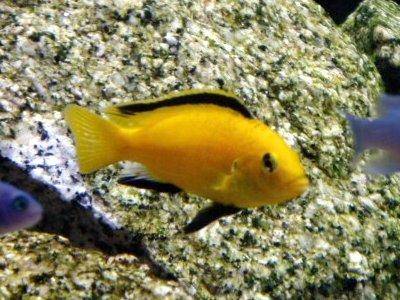























 Thread-finned
Thread-finned  Acara
Acara  Yellow
Yellow  Patrick's
Patrick's  Blue
Blue  Green
Green  Acara
Acara  White
White  Compressed
Compressed  Pastel
Pastel  Midas
Midas  Red
Red  Bluemouth
Bluemouth  False
False  African
African  Agassiz's
Agassiz's  Banded
Banded  Yellow
Yellow  Cockatoo
Cockatoo  Blue
Blue  Blackstripe
Blackstripe  Highfin
Highfin  Redstripe
Redstripe  Threadfinned
Threadfinned  Macmaster’s
Macmaster’s  Panda
Panda  Norbert’s
Norbert’s  Blue
Blue  Thin-line
Thin-line  Three-striped
Three-striped  Viejita
Viejita  Flier
Flier  Archocentrus
Archocentrus  Convict
Convict  Seven
Seven  Blue-eye
Blue-eye  Spiny
Spiny  Oscar
Oscar  Sunshine
Sunshine  Chitande
Chitande  Firebird
Firebird  Midnight
Midnight  Lake
Lake  Sunshine
Sunshine  Aulonocara
Aulonocara  Nyasa
Nyasa  Ruby
Ruby  Grants
Grants  Aulonocranus
Aulonocranus  Chameleon
Chameleon  Benitochromis
Benitochromis  Orinoco
Orinoco  Yellow
Yellow  Brichard’s
Brichard’s  Guenther’s
Guenther’s  Cichla
Cichla  Peacock
Peacock  Chiseltooth
Chiseltooth  Bolivian
Bolivian 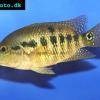 Red
Red  Many-pointed
Many-pointed  Jack
Jack  Red
Red 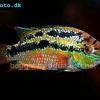 Yellow
Yellow  Three
Three  Mayan
Mayan  Keyhole
Keyhole  Azureus
Azureus  Red
Red  Jackson’s
Jackson’s  Crenicichla
Crenicichla  Honduran
Honduran  Afra
Afra  Frontosa
Frontosa  Slender
Slender 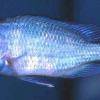 Malawi
Malawi 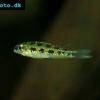 Chequerboard
Chequerboard  Checkerboard
Checkerboard  Malawi
Malawi  Ectodus
Ectodus  Tanganyika
Tanganyika  Canara
Canara  Green
Green  Rostratus
Rostratus  Pearl
Pearl  Geophagus
Geophagus  Yellowhump
Yellowhump 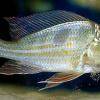 Suriname
Suriname  Redhump
Redhump  Red
Red  Dority’s
Dority’s  Argentine
Argentine  Burton’s
Burton’s  Victoria
Victoria  Haplochromis
Haplochromis  Jewel
Jewel  Banded
Banded  Lifalili
Lifalili  Lowland
Lowland  Texas
Texas  Pantano
Pantano  Severum
Severum  Banded
Banded  Severum
Severum 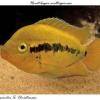 Rainbow
Rainbow 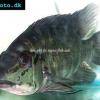 Parrot
Parrot 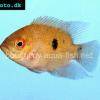 Chocolate
Chocolate  Brown
Brown  Marlieri
Marlieri  Golden
Golden  Striped
Striped  Masked
Masked  Konye
Konye  Blue
Blue  Trewavas
Trewavas  Dwarf
Dwarf  Redbreast
Redbreast  Lamprologus
Lamprologus  Gold
Gold  Greenface
Greenface 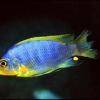 Aurora
Aurora  Blue
Blue  William’s
William’s  Zebra
Zebra  Malawi
Malawi  Blue
Blue  Blue
Blue  Mbuna
Mbuna  Parallel
Parallel  Purple
Purple  Flag
Flag  Bolivian
Bolivian  Ram
Ram  Basket
Basket  Haitian
Haitian  Zebra
Zebra  Striped
Striped 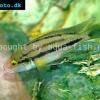 Neolamprologus
Neolamprologus  Brevis
Brevis  Fairy
Fairy  Neolamprologus
Neolamprologus  Cylindricus
Cylindricus  Hecq’s
Hecq’s  Neolamprologus
Neolamprologus  Lemon
Lemon  Mustax
Mustax  Daffodil
Daffodil  Six-bar
Six-bar  Five-bar
Five-bar  Marbled
Marbled  Giraffe
Giraffe  Blue
Blue  Sulphurhead
Sulphurhead  Wolf
Wolf  Jaguar
Jaguar  Blue
Blue  Marakeli
Marakeli  Madagascar
Madagascar  Pinstripe
Pinstripe  Pelmatochromis
Pelmatochromis  Kribensis
Kribensis  Striped
Striped  Red
Red  Deepwater
Deepwater  Fenestratus
Fenestratus  Nichols’
Nichols’  Southern
Southern  Bumble
Bumble  Demason’s
Demason’s  Slender
Slender  Red
Red  Mbuna
Mbuna  Malawi
Malawi  Kenyi
Kenyi  Powder
Powder  Altum
Altum 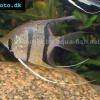 Angelfish
Angelfish  Angelfish
Angelfish  East
East  Juba
Juba  Earth
Earth 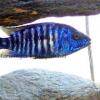 Electric
Electric  Azure
Azure  Lionhead
Lionhead  Discus
Discus  Blue
Blue 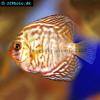 Zebra
Zebra  Red
Red  Brichard’s
Brichard’s  Blue
Blue  Firemouth
Firemouth  Zebra
Zebra  Blue
Blue  Dwarf
Dwarf  Blunthead
Blunthead  The
The  White
White  Twoband
Twoband  Fenestratus
Fenestratus  Window
Window 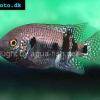 Southern
Southern  Tailbar
Tailbar  Black
Black  Redhead
Redhead 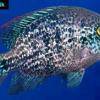 Oaxaca
Oaxaca  Xenotilapia
Xenotilapia